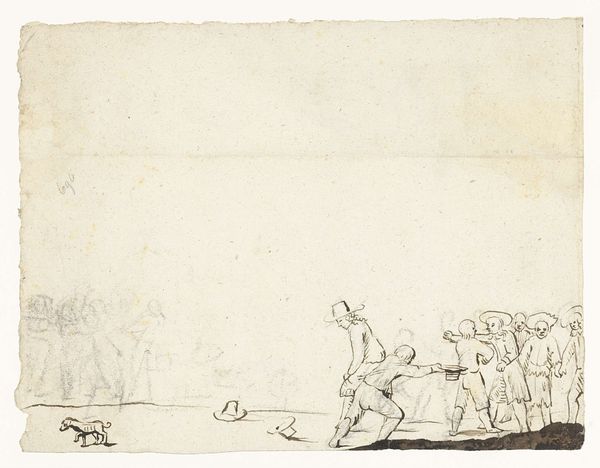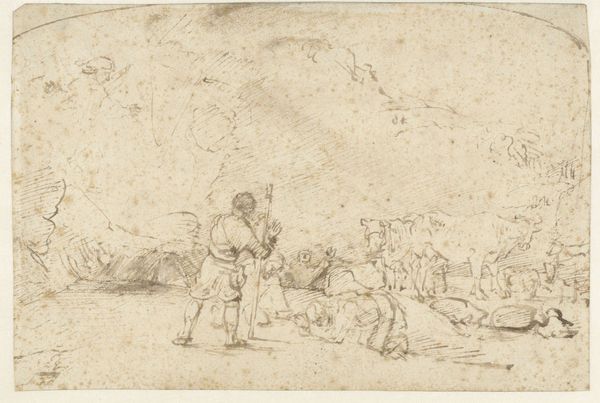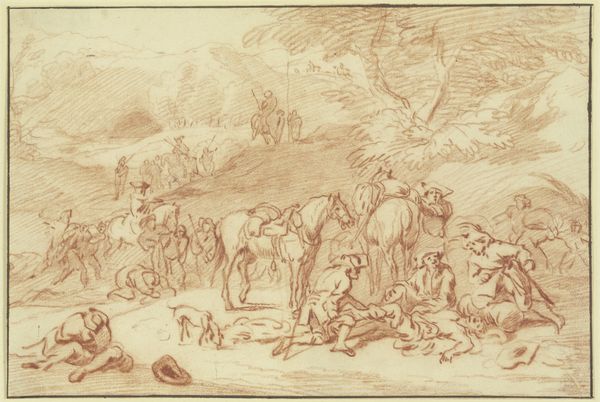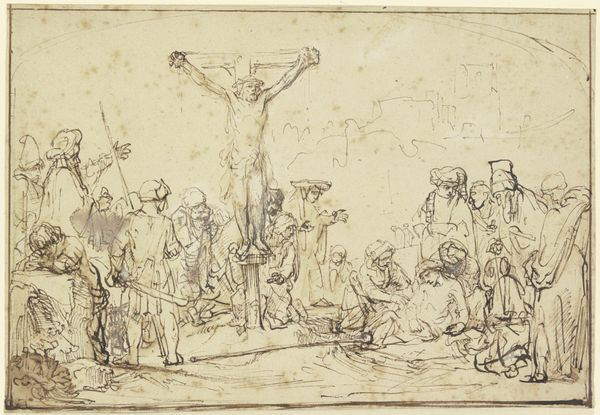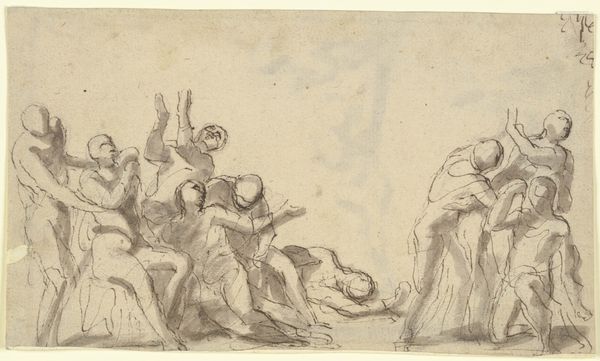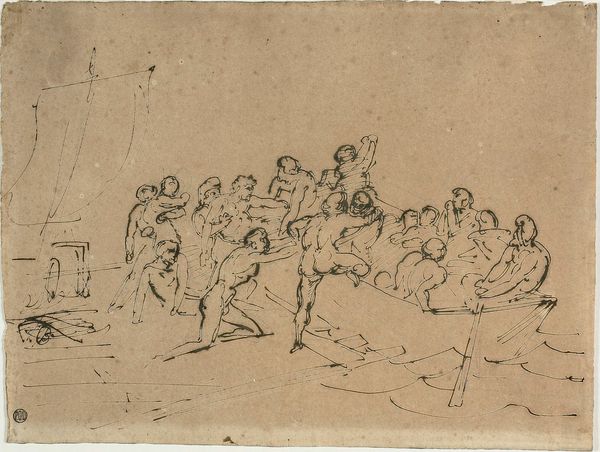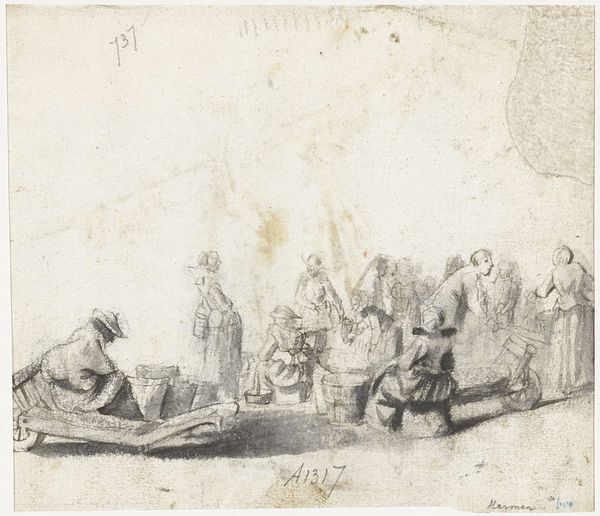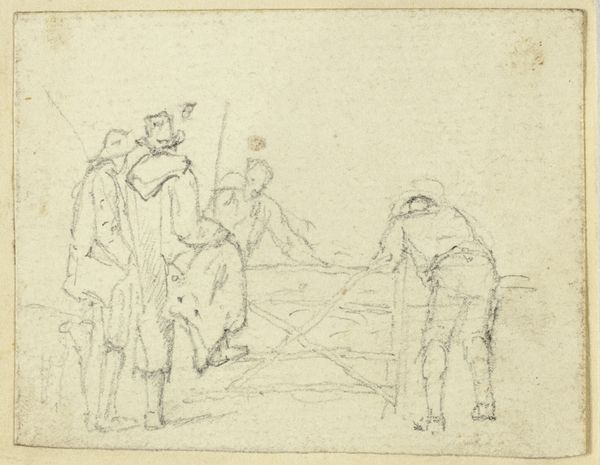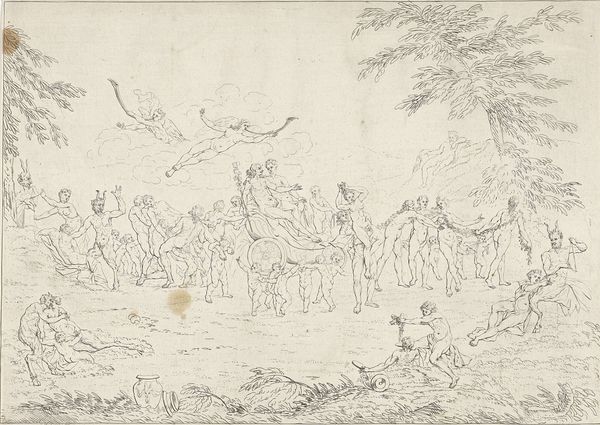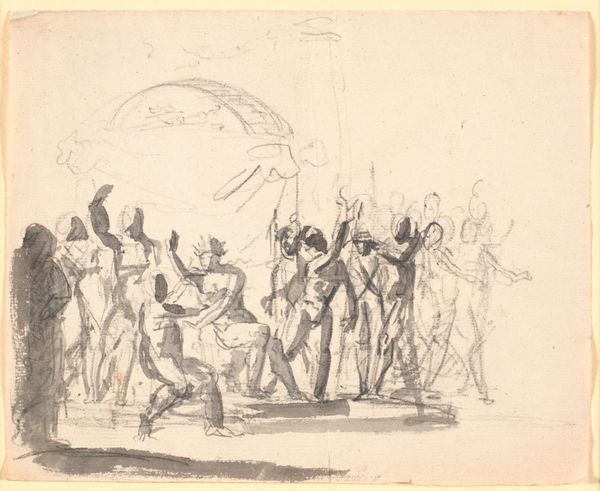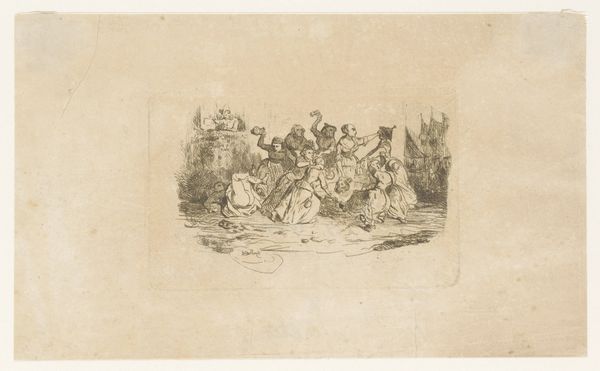
drawing, ink, pen
#
drawing
#
ink drawing
#
dutch-golden-age
#
pen sketch
#
pencil sketch
#
ink
#
pen
#
genre-painting
Dimensions: height 88 mm, width 158 mm
Copyright: Rijks Museum: Open Domain
Curator: Welcome, everyone. Here we have Moses ter Borch's drawing, dating back to about 1656, titled “Jongens die Witte zwanen, zwarte zwanen spelen,” or "Boys Playing White Swans, Black Swans." It's currently held in the Rijksmuseum collection. Editor: It has an almost frantic, fleeting quality, doesn’t it? The scratchy lines and simple composition suggest it was captured in haste. Curator: Ter Borch created it using ink and pen. It seems spontaneous, but there is a long lineage to such renderings of everyday life in Dutch art, an ongoing investigation of collective life through this particular theme of children’s games. Notice the dark strokes outlining the figures against the pale background, as though life and death are written into this playground scenario, this ephemeral experience, itself. Editor: Absolutely. And you see how little attention has been devoted to any particular aspect; Ter Borch's medium communicates this disregard in favor of speed, making the scene visible to a rapidly expanding merchant class who wanted images quickly reproduced and circulated. I am fascinated with that abandoned hat at the bottom of the drawing, as a symbol of emerging social changes, when social identity became more complex than ever before. Curator: Indeed. And even the ship, that ghostly vessel that appears as the backdrop, connects this particular image to wider mercantile networks of mobility and access, reflecting global exchange. Perhaps we could see a correlation here, then, with childhood: new life, full of opportunity and, of course, potential exploitation within the colonial enterprise. Editor: These observations reinforce that the subject isn’t necessarily about childhood as a purely carefree state, but a product of historical circumstances, and therefore inextricably woven to exploitation, consumption, and distribution channels. I am sure they are even acting something about sailors arriving with wares. Curator: Quite. We get a fleeting glimpse into the ways these global trade networks imprinted upon Dutch society, at all social levels. Editor: Ter Borch manages to weave multiple aspects together through what appears to be a humble, understated work. Curator: Precisely. We witness the everyday intersecting with something far more pervasive. It leaves you wondering about how each impacts the other, not only back then but today.
Comments
No comments
Be the first to comment and join the conversation on the ultimate creative platform.
